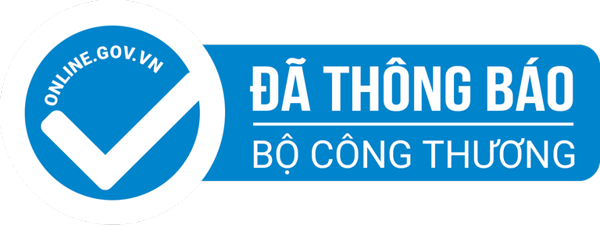Đề Thi Trắc Nghiệm Marketing 425 Phần 1 | Học Viện Tài Chính (Miễn Phí Có Đáp Án)
Bộ đề thi trắc nghiệm Marketing 425 phần 1 dành cho sinh viên Học viện Tài chính, cung cấp miễn phí và có đáp án chi tiết. Đề thi bao gồm các câu hỏi đa dạng về các khái niệm và kiến thức cơ bản trong môn Marketing, giúp sinh viên ôn tập và kiểm tra kiến thức hiệu quả. Tài liệu phù hợp cho những ai chuẩn bị cho kỳ thi Marketing 425, giúp củng cố kỹ năng và tự tin hơn trong việc đạt điểm cao.
Từ khoá: đề thi trắc nghiệm Marketing 425Marketing 425 Học viện Tài chínhcâu hỏi trắc nghiệm Marketingđề thi Marketing có đáp ánôn tập Marketing 425đề thi Marketing miễn phítrắc nghiệm Marketing phần 1học Marketing Học viện Tài chínhcâu hỏi Marketing có đáp ánluyện thi Marketing
Câu 1: Which of the following is an example of a digital touchpoint in the awareness stage of the consumer decision journey?
Câu 2: What is the purpose of analytics and reporting in digital marketing?
A. To measure the effectiveness of campaigns
B. To track key metrics and performance indicators
C. To make data-driven decisions
Câu 3: Which social media platform is best for driving traffic to your product catalogue on your website?
Câu 4: What is the importance of analytics in digital marketing?
A. It helps measure the success of marketing campaigns
B. It provides insights into customer behavior and preferences
C. It assists in making data-driven decisions
Câu 5: Which of the following is an example of a touchpoint in the consideration stage of the consumer decision journey?
C. Product demonstrations
Câu 6: How would you describe what multi-channel attribution does?
A. Gives the conversion credit to the first click
B. Assign equal percentages for conversions to every step
C. Accredits deserving touchpoints along the conversion journey
D. Gives the conversion credit to the last click
Câu 7: Which of the following is an example of a touchpoint in the purchase stage of the consumer decision journey?
A. Checkout process on an e-commerce website
B. Customer support hotline
C. Loyalty program rewards
Câu 8: What is the purpose of content marketing in digital marketing?
A. To create brand awareness
B. To educate and engage the target audience
C. To drive website traffic
Câu 9: What is a touch point in marketing?
A. A physical location where customers buy products
B. Any interaction a customer has with a brand
C. A type of marketing strategy
Câu 10: Which of the following is an example of a digital touch point?
B. Social media interaction
C. Television advertisement
Câu 11: Customer service interactions are considered:
A. Pre-purchase touch points
B. Post-purchase touch points
C. Unimportant touch points
D. Irrelevant to digital marketing
Câu 12: Which touch point is crucial for building brand awareness?
C. Customer service calls
Câu 13: Which of the following is not a digital touch point?
Câu 14: Touch points during the purchase phase can include:
Câu 15: What role do touch points play in the consumer journey?
A. They are the only factor in purchasing decisions
B. They help shape the customer's overall experience with the brand
C. They are unrelated to customer satisfaction
D. They are only important post-purchase
Câu 16: Which of the following is NOT a component of the digital marketing environment?
A. Social media platforms
B. Mobile devices and apps
C. Traditional print media
Câu 17: What is the primary purpose of conducting marketing research in the digital realm?
A. To understand consumer behaviour and preferences online
B. To identify potential cyber threats
C. To analyze website traffic data
D. To develop new digital marketing strategies
Câu 18: Which of the following is NOT a standard method used in digital marketing research?
D. Door-to-door interviews
Câu 19: Which of the following is an example of a primary data source in digital marketing research?
C. Online customer reviews
D. Social media analytics
Câu 20: What is the purpose of A/B testing in digital marketing?
A. To compare the effectiveness of two different marketing strategies
B. To measure website loading speed
C. To analyze user demographics
D. To identify broken links on a website
Câu 21: Which of the following is NOT a common digital marketing channel?
C. Pay-per-click advertising
Câu 22: What is the term used to describe the practice of optimizing a website's content and structure to improve its visibility in search engine results?
A. Search engine marketing (SEM)
B. Search engine optimization (SEO)
C. Social media marketing (SMM)
Câu 23: What does SEO stand for?
A. Search Engine Optimization
B. Site Engine Optimizing
C. Seek Engine Optimization
D. Search Encode Optimizing
Câu 24: Which is NOT a key element of on-page SEO?
Câu 25: What is the main function of the meta description tag?
A. Help search engines understand page content
B. Improve rankings in search results
C. Provide a short page summary in search results
Câu 26: Which ranking factor is most important for Google?
Câu 27: What is link building?
A. Creating internal website links
B. Getting other websites to link to yours
C. Linking out to other sites
D. Building a link profile
Câu 28: Which web metric measures bounce rate?
Câu 29: Local SEO is important for which type of business?
B. Brick-and-mortar businesses
Câu 30: What is keyword research?
A. Finding popular keywords to target
B. Finding keywords your competitors rank for
Câu 31: Which is NOT a best practice for URL structure?
A. Using hyphens to separate words
B. Making URLs short and descriptive
C. Including numbers in URLs
D. Using lowercase letters
Câu 33: What is a common way to improve website performance?
A. Adding more pages to the website
B. Using larger image files
C. Minimizing HTTP requests
D. Increasing the use of external scripts
Câu 34: What is a key feature of Google Search Console?
A. It allows you to submit your sitemap to Google
B. It provides detailed information about your paid search campaigns
C. It allows you to edit your website's content directly
D. It provides information about your competitors' websites
Câu 35: What is the bounce rate in Google Analytics?
A. The percentage of visitors who leave your site after viewing only one page
B. The average time spent on your website
C. The number of pages viewed per session
D. The percentage of returning visitors

